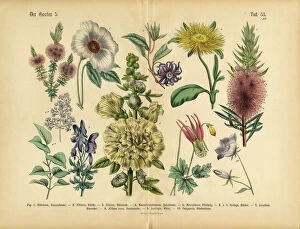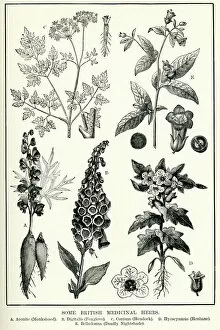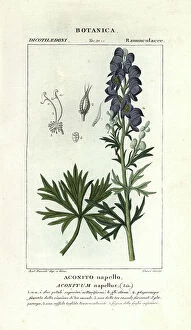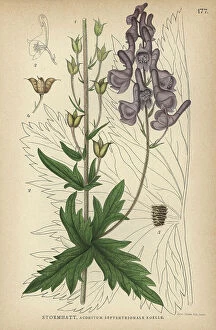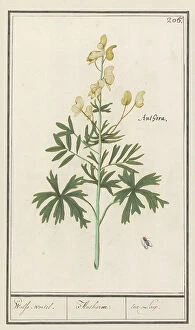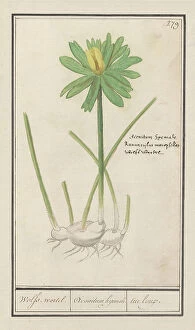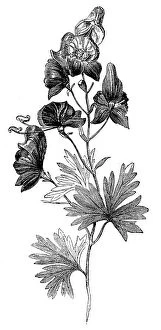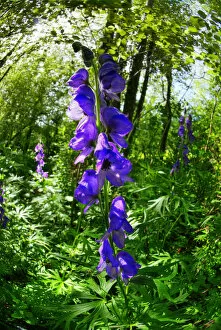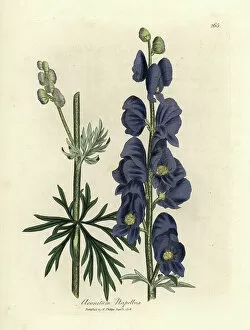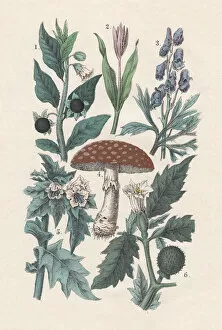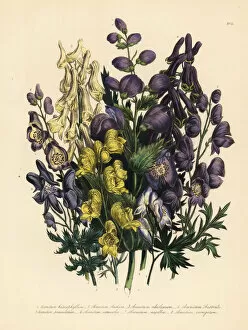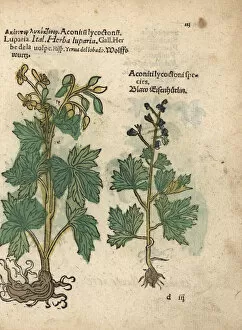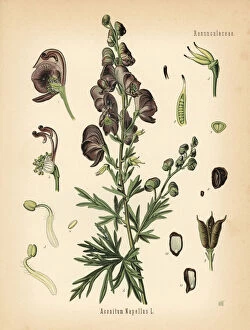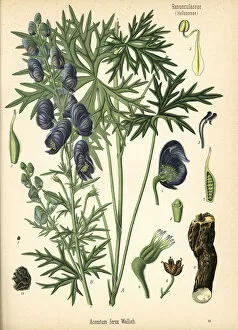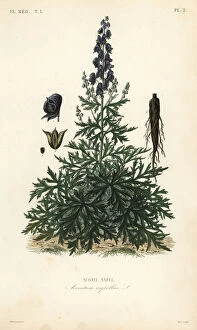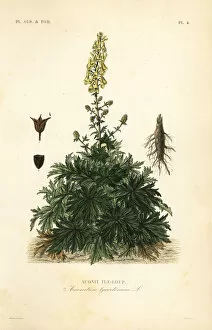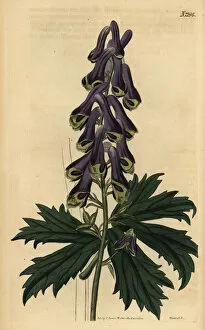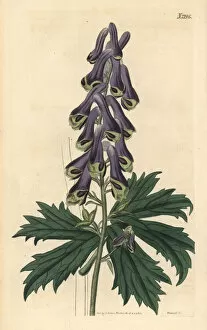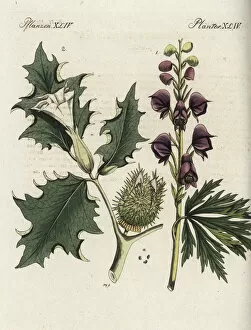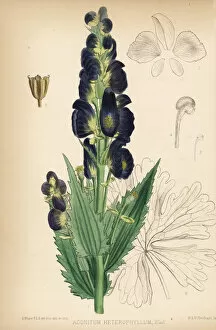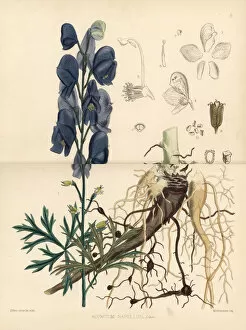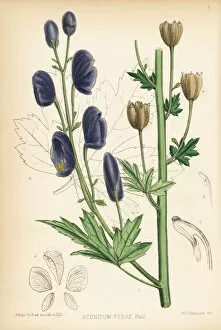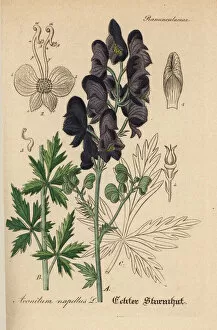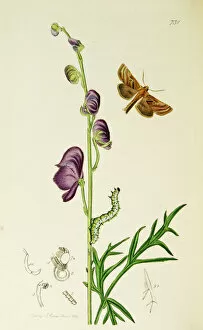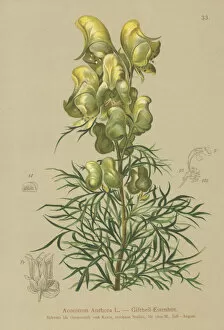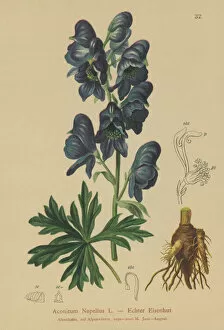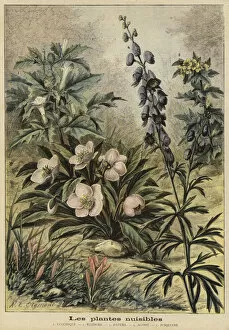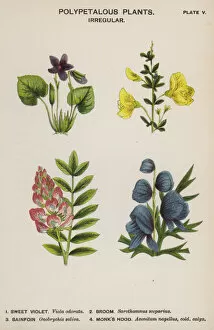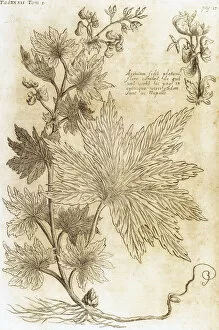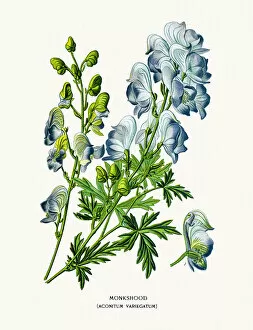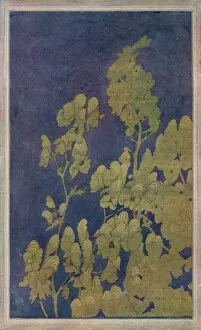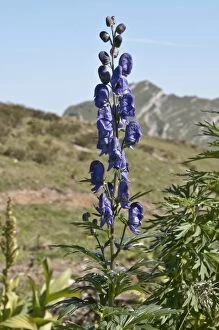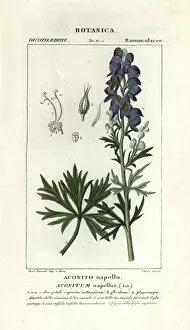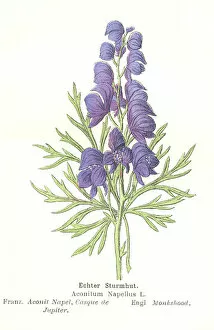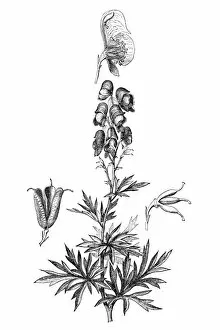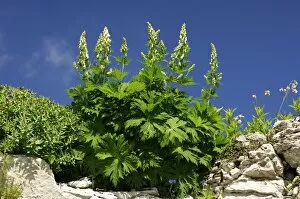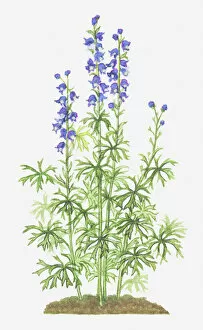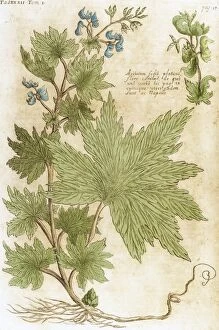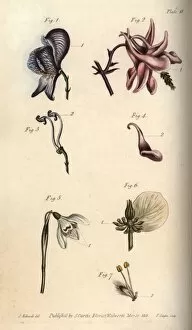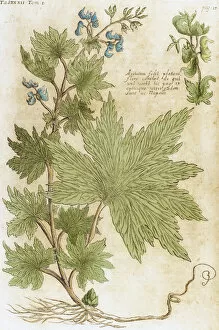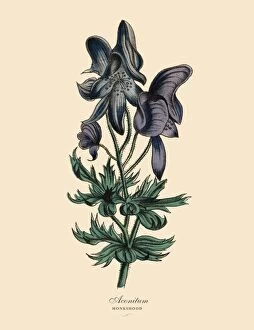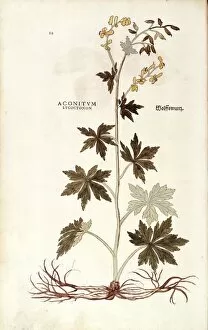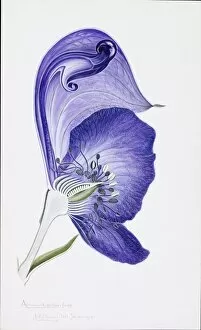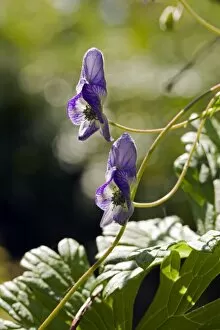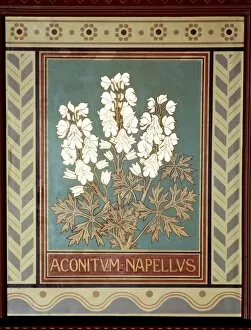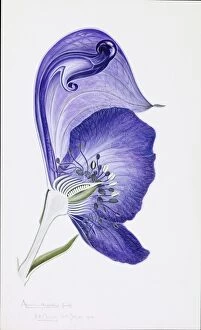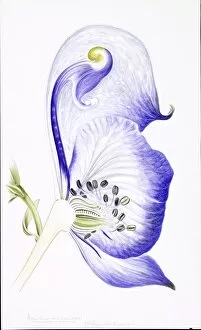Aconitum Collection
"Aconitum: Exotic Flowers of the Garden and Victorian Botanical Illustration" Step into a world of enchantment with Aconitum
For sale as Licensed Images
Choose your image, Select your licence and Download the media
"Aconitum: Exotic Flowers of the Garden and Victorian Botanical Illustration" Step into a world of enchantment with Aconitum, a mesmerizing genus of exotic flowers that captivate both nature enthusiasts and art lovers alike. These stunning blooms have been immortalized in intricate Victorian botanical illustrations, showcasing their delicate beauty for generations to admire. But there's more to Aconitum than meets the eye. Beyond its aesthetic appeal, this plant holds significant medicinal value as well. Known as Monkshood or Aconitum napellus, it can be found growing on the banks of the Mells Stream in Edford Woods. Its vibrant blue petals are reminiscent of a monk's hood, hence its intriguing name. In fact, it has long been used in herbal medicine due to its potent properties. The Northern wolfsbane species (Aconitum lycoctonum) and Indian aconite (Aconitum ferox) are just some examples that have been utilized for their healing benefits throughout history. Transport yourself back to 1880 through hand-colored lithographs featuring these exquisite plants. Published during an era when botanical illustration was at its peak, these prints capture every intricate detail with precision and elegance. Monkshood or wolfsbane (Aconitum napellus) stands out among other members of this diverse family with its striking blue flowered wolf's bane appearance. Its allure is undeniable; one cannot help but be drawn towards its mysterious charm. Whether you're an avid gardener seeking unique additions or simply appreciate the wonders of nature depicted through art, Aconitum is sure to leave you spellbound. From Monk s-hood to Indian aconite and everything in between, explore the vast variety within this captivating genus – each species offering something truly extraordinary.

